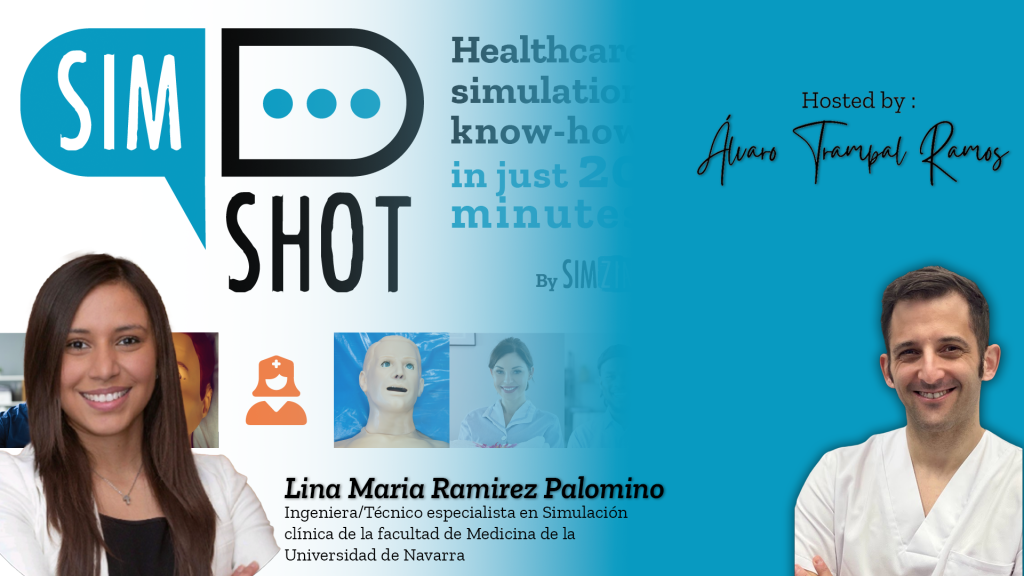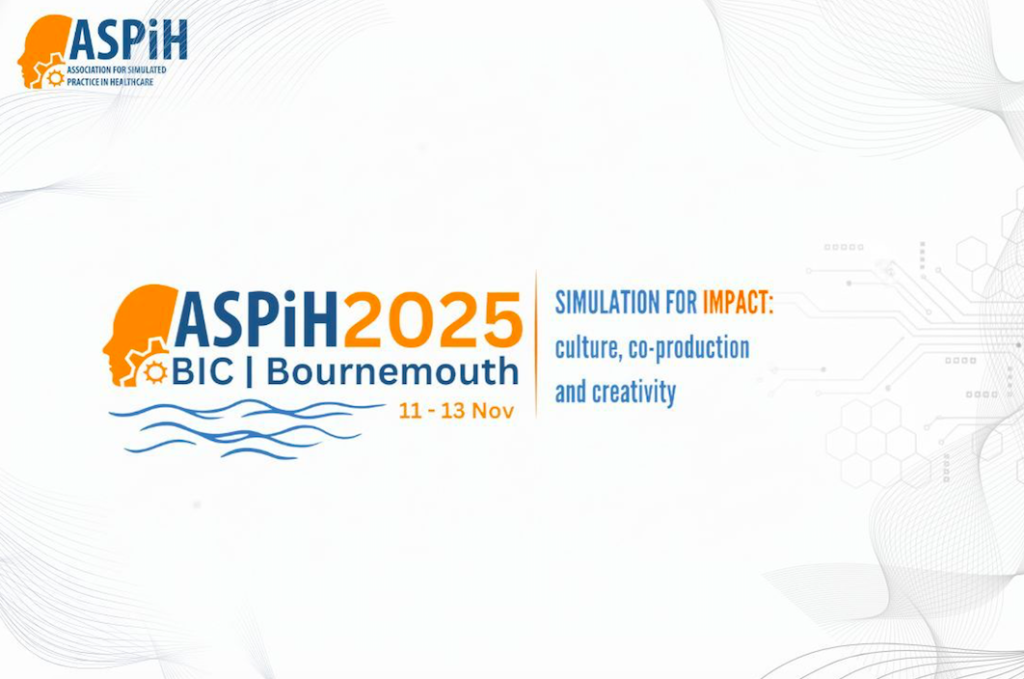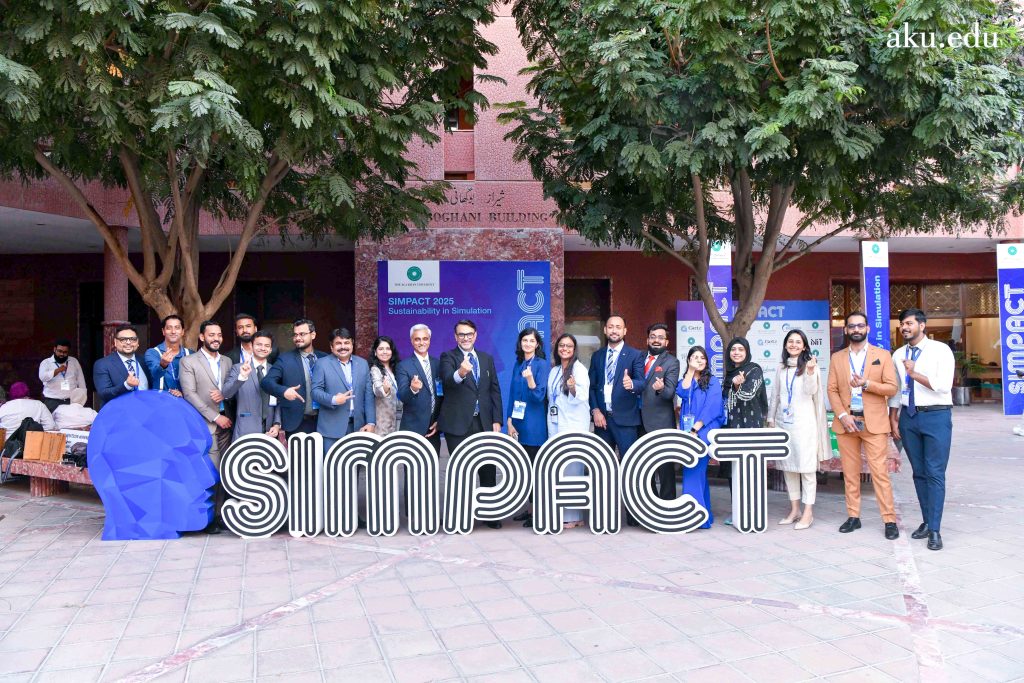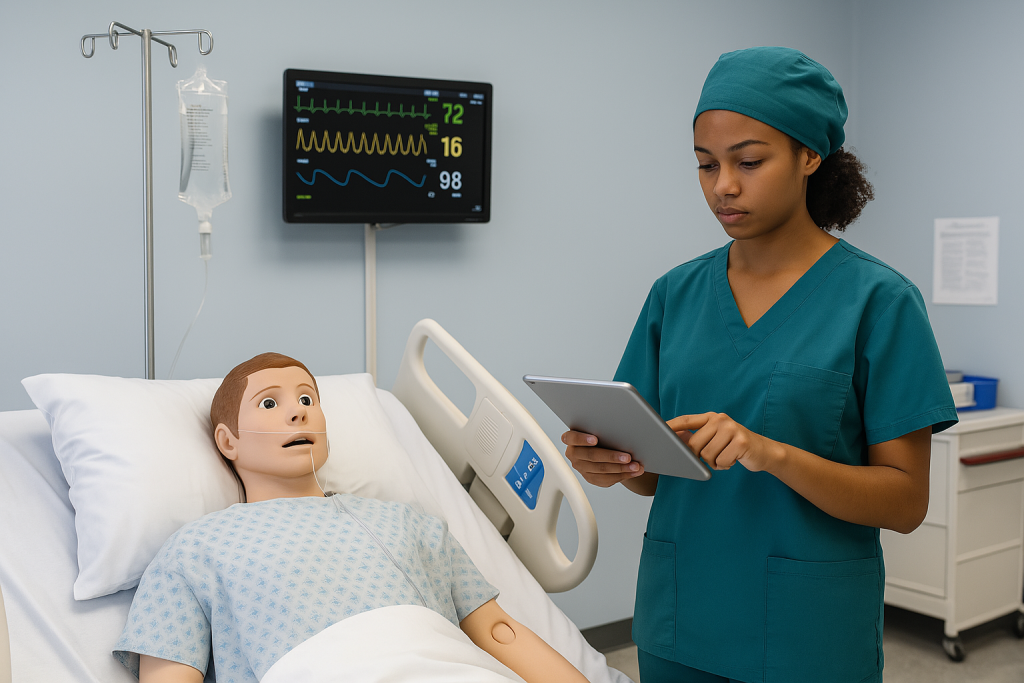On May 23, a significant Global consensus statement on simulation-based practice in healthcare was officially released, encapsulating the expertise and perspectives of healthcare professionals from 67 countries. This statement highlights the pivotal role of simulation in healthcare, aiming to set new standards and unify approaches across the globe. Facilitated by SESAM and SSH, the Statement represents a comprehensive agreement on the strategic importance of integrating simulation technologies across healthcare systems.
It is perhaps a historic moment we witnessed on May 23rd: the Global Consensus Statement On Simulation-Based Practice In Healthcare was officially released in an online ceremony. The document captures the expertise and perspectives of healthcare professionals from 67 countries, highlighting the central role of simulation in healthcare.
But let’s see together to understand what it is all about and what the benefits and implications might be?
What is the Global Consensus on Healthcare Simulation?
The Global Consensus on Healthcare Simulation is a unified declaration crafted by representatives from 50 national and international simulation societies and networks distributed across 67 countries to advocate for and enhance the implementation of simulation in healthcare. This consensus serves as a guideline to standardize and promote the use of simulation technologies as a foundational element of medical training and healthcare delivery. Facilitated by Society for Simulation in Europe (SESAM) and Society for Simulation in Healthcare (SSH), the consensus is aimed at fostering a shared understanding and coordinated approach to employing simulation methods for better educational outcomes and patient care globally. «The global consensus statement embodies a strong collaborative policy effort to promote healthcare simulation and patient safety. This support at institutional and governmental level is crucial for a sustainable commitment to adopting and integrating simulation into daily learning and practice. Both SESAM and SSH are deeply engaged in this pivotal advocacy movement» says Francisco Matos, President of SESAM. «The Global Consensus Statement exemplifies a crucial SSH strategic pillar, advocating for the adoption of healthcare simulation in education, research, and clinical practice» adds Barry Issenberg, SSH President «SSH and SESAM, as leading global healthcare simulation organizations, acknowledge that the full potential of simulation to enhance training and clinical practice remains untapped. Realizing this potential will necessitate a focused effort to promote awareness and collaborate with a wide range of global bodies to ensure this goal is achieved».
What was Agreed Upon?
The consultation process identified global healthcare challenges, such as significant disparities in access to healthcare, safety culture, and professional education at various levels. Financial constraints exacerbate these disparities, especially in lower-income countries, leading to limited opportunities for training and upskilling of healthcare workers. These systemic issues negatively impact healthcare outcomes and worker morale. Simulation has emerged as a critical solution and the consensus underscored several critical areas where simulation can significantly enhance healthcare delivery. In particular:
– Impact on Patient Safety and Quality of Care: the use of simulation in healthcare training has been shown to improve the competence of healthcare providers, thereby enhancing patient safety and the overall quality of care. Simulation allows for the safe practice of medical procedures and the management of medical emergencies, which in turn helps reduce errors in real-world scenarios. In addition, simulation encourages a collaborative approach among various healthcare disciplines, improving overall patient care.
– Enhancing Healthcare Equity: advocating for universal access to simulation-based training aims to reduce the disparities in healthcare education and practice. This is especially significant in regions that currently suffer from inadequate healthcare resources. Simulation offers a way to elevate training and outcomes in these areas, potentially leading to significant improvements in global health equity.
– Cost-Effectiveness: simulation is a cost-effective training method that can save healthcare systems substantial resources by reducing the need for expensive clinical training environments and decreasing the incidence of costly medical errors.
– Supporting Rapid Technological Adaptation: As healthcare technologies evolve, simulation provides a flexible and adaptable platform for healthcare professionals to learn new skills and adapt to new tools without the immediate risks associated with real-life patient care. This adaptability is crucial for keeping pace with the rapid advancements in medical technology.
Who is the Intended Audience?
The primary audience for this consensus includes policymakers, healthcare organization leaders, educational institutions, and simulation practitioners. These stakeholders are pivotal in adopting and implementing the recommendations laid out in the consensus to foster a more efficient and effective healthcare environment globally. «All of them have key roles in promoting the widespread adoption of simulation practices» says Cristina Diaz-Navarro, from SESAM and one of the two leading authors of the Consensus Statement «Policymakers and leaders are crucial in the identification and allocation of funding and development of regulation to foster sustainable simulation. Healthcare systems and healthcare education institutions are essential to effectively resource and promote simulation as a critical and necessary interprofessional learning tool. Simulation practitioners are instrumental in providing the means to support healthcare workforces globally and enhance patient outcomes».
Why Is This Consensus Statement So Important?
This consensus statement will serve as a powerful advocacy tool that can influence policy decisions and resource allocation in healthcare systems worldwide. By demonstrating the widespread support and documented benefits of simulation, the statement can help secure funding and policy backing necessary to expand simulation initiatives. By addressing the critical aspects, the Global Consensus Statement on Healthcare Simulation would play an essential role in shaping the future of healthcare, ensuring that simulation-based training and practices become foundational components of healthcare education and patient care strategies worldwide, ultimately fostering an environment where continuous improvement in healthcare outcomes is not just possible but expected. «This consensus statement is an important global capture of not just the similar and different ways that healthcare educators and practitioners are using simulation, but also the challenges our peers are facing on a daily basis. We have found that, while cultural differences and methods of application are varied, we are all facing many of the same issues» reports Bob Armstrong, from SSH and leading author of the Consensus Statement.
Where the Full Version Can Be Found?
The full version of the Global Consensus Statement on Healthcare Simulation is available on its official website http://globalsimconsensus.info/. This platform provides detailed insights into the consensus process, the findings, and the actionable recommendations for global healthcare systems.
Additionally, to ensure widespread dissemination and accessibility, the statement will also be published simultaneously in all major scientific journals dedicated to simulation. This coordinated publication strategy aims to reach academics, practitioners, and policymakers across various sectors, further emphasizing the statement’s global impact and its foundational role in advancing healthcare simulation practices.
What’s next?
The next crucial step is gaining formal endorsement from simulation societies around the world. The call to action for these societies is, in fact, clear: to formally recognize and endorse the consensus statement as a foundational document. By doing so, they commit to promoting and implementing its guidelines within their networks and influence spheres. Such endorsements will amplify the impact of the consensus, encouraging wider adoption and implementation of simulation practices. It will also strengthen the position of simulation as an essential component of healthcare training and quality improvement, ensuring that these practices are not just recommended but institutionalized.
Final reflections
As we reflect on the consensus reached, it becomes clear that the power of simulation extends beyond training rooms and academic discussions. It holds the potential to transform healthcare practices globally by enhancing the skills of healthcare professionals, improving patient outcomes, and optimizing healthcare systems. The success of this initiative, in fact, depends on a collective effort from all stakeholders to embrace and advocate for the transformative power of simulation, making it a staple in healthcare education and patient safety initiatives worldwide.
In conclusion, the Global Consensus Statement is more than a set of guidelines; it is a call to action. It challenges all stakeholders in the healthcare and simulation communities to not only embrace these practices but also to innovate and advocate for continuous improvement. As we move forward, the commitment to these principles will be pivotal in shaping a safer, more effective, and equitable healthcare system for all.
READ ALSO







































